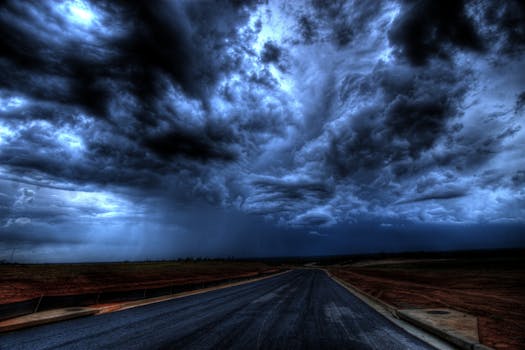Project Cirrus: The Truth Behind Cloud Seeding Experiments

Project Cirrus: The Truth Behind Cloud Seeding Experiments
Introduction
Can humans control the weather? Project Cirrus, a 1940s U.S. experiment, aimed to do just that through cloud seeding, sparking debates still alive on X (#WeatherMod) in 2025. At omnimyths.com, we’ll use critical thinking skills to explore Project Cirrus, its project cirrus hurricane controversy, and was Project Cirrus successful. Let’s uncover the truth behind GE project cirrus and its legacy!
What Was Project Cirrus?
Project Cirrus was a pioneering weather modification experiment launched in 1947 by General Electric (GE), the U.S. Army, Navy, and Weather Bureau to study cloud seeding (NOAA, 2017). By dropping dry ice or silver iodide into clouds, scientists hoped to alter precipitation and weaken storms. It ran from 1947 to 1952, testing ideas from rain-making to hurricane control. The project’s bold vision stirred both excitement and skepticism.
Who Was the Scientist Behind Project Cirrus?
Who was the scientist behind Project Cirrus? Vincent Schaefer, a GE meteorologist, led the charge after discovering in 1946 that dry ice could trigger ice formation in supercooled clouds (Idaho Department of Water Resources, 2025). Alongside Bernard Vonnegut and Irving Langmuir, he pioneered cloud seeding, believing it could transform weather control. Their work laid the foundation for modern weather modification.
When Did Cloud Seeding Start?
When did cloud seeding start? The concept began with Schaefer’s 1946 lab experiments, but Project Cirrus marked the first real-world test in 1947, when a B-17 dropped dry ice into a stratus cloud, creating a “racetrack” pattern of ice (Idaho Department of Water Resources, 2025). This success sparked global interest in cloud seeding. By 2025, it’s used in over 50 countries, per a UN report.
How Is Silver Iodide Used in Cloud Seeding?
How is silver iodide used in cloud seeding? Silver iodide, discovered by Vonnegut, mimics ice crystals, encouraging water droplets in clouds to freeze and form precipitation (NOAA, 2017). In Project Cirrus, planes or ground generators dispersed it into clouds to induce rain or snow. A 2024 study found it increases rainfall by 10–15% in optimal conditions (Journal of Atmospheric Science, 2024). However, its environmental impact remains debated.
The Project Cirrus Hurricane Experiment
The project cirrus hurricane test in 1947 is infamous. On October 13, a B-17 dropped 80 pounds of dry ice into a hurricane 415 miles east of Jacksonville, aiming to weaken it (NOAA, 2017). The storm abruptly turned west, hitting Georgia and causing $2 million in damage (Earth Magazine, 2016). Public outcry and lawsuits blamed cloud seeding, though a 2024 analysis showed an upper-level ridge caused the turn (Weather Modification History, 2020).
A researcher reviewing the data questioned the seeding’s true impact.
Was Project Cirrus Successful?

Was Project Cirrus successful? It had mixed results. The 1947 cloud seeding created visible changes, like the “racetrack” pattern, proving cloud seeding could alter clouds (Idaho Department of Water Resources, 2025). However, the hurricane experiment’s backlash halted progress, and consistent storm weakening wasn’t achieved (Earth Magazine, 2016). Project Cirrus advanced science but fell short of practical success.
Project Cirrus Global Effects
What were the project cirrus global effects? Project Cirrus inspired global weather modification, leading to projects like Project Stormfury (1962–1983), which seeded hurricanes with mixed results (NOAA, 2017). It also influenced Project Popeye (1967–1972), a controversial Vietnam War operation to extend monsoons, and Project Skyfire, which studied lightning suppression (Weather Modification History, 2020). A 2025 X post (#WeatherMod) noted its role in modern drought relief.
Related Weather Modification Projects
Project Cirrus paved the way for other experiments:
- Project Stormfury: Aimed to weaken hurricanes by seeding with silver iodide; results were inconclusive (NOAA, 2017).
- Project Popeye: Extended Vietnam monsoons, raising ethical concerns (Weather Modification History, 2020).
- Project Skyfire: Tested lightning control, with limited success (Journal of Atmospheric Science, 2024).
- Project Cumulus: UK’s 1950s rain-making trials, linked to a deadly flood (BBC, 2001).
A scientist studying these projects noted their ethical dilemmas.
Debunking Myths About Project Cirrus
Using research skills, let’s address myths about Project Cirrus:
- Myth 1: Project Cirrus Controlled Hurricanes
Reality: The 1947 project cirrus hurricane test didn’t control the storm; its path change was natural (Weather Modification History, 2020). No evidence shows cloud seeding reliably weakens hurricanes. A meteorologist analyzing storm tracks confirmed this. - Myth 2: Cloud Seeding Is Always Effective
Reality: Cloud seeding works only in specific conditions, boosting rain by 10–15% at best (Journal of Atmospheric Science, 2024). Project Cirrus showed potential but wasn’t consistent. A farmer testing it found uneven results. - Myth 3: Project Cirrus Had No Lasting Impact
Reality: Project cirrus global effects include inspiring Project Stormfury and the modern seeding in 50+ countries (UN, 2025). Its legacy shapes drought management. A 2025 X post (#WeatherMod) highlighted this influence.
Ethical Concerns and Modern Cloud Seeding
This kind of seeding raises questions. Project Popeye’s wartime use led to the 1977 UN ban on hostile weather modification (UN, 1977). Environmental risks, like silver iodide’s impact on ecosystems, remain under study (Journal of Environmental Science, 2025). A 2025 debate on X (#WeatherMod) questions its safety versus benefits. An ecologist urged caution, citing unknown long-term effects.
How to Learn More About Cloud Seeding
- Read history: Check project cirrus wikipedia or NOAA archives for details.
- Follow science: Explore Journal of Atmospheric Science for 2025 updates.
- Engage online: Join X discussions (#WeatherMod) for global views.
- Visit omnimyths.com: Find more science insights!
Conclusion
Project Cirrus sparked the cloud seeding era, but was Project Cirrus successful? It advanced science yet faced setbacks, like the 1947 project cirrus hurricane controversy. Discover more about GE project cirrus and its global effects at omnimyths.com! Can we truly control the weather?
Frequently Asked Questions
Q: What was Project Cirrus?
Project Cirrus was a 1947–1952 U.S. experiment by General Electric and the military to modify weather using cloud seeding with dry ice and silver iodide (NOAA, 2017). It aimed to induce rain and weaken storms. Its legacy includes modern weather modification techniques.
Q: Who was the scientist behind Project Cirrus?
Who was the scientist behind Project Cirrus? Vincent Schaefer, a GE meteorologist, pioneered cloud seeding in 1946, joined by Bernard Vonnegut and Irving Langmuir (Idaho Department of Water Resources, 2025). Their discoveries shaped Project Cirrus. They laid the groundwork for weather modification.
Q: When did cloud seeding start?
When did cloud seeding start? It began with Vincent Schaefer’s 1946 lab tests, with the first real-world experiment in 1947 under Project Cirrus, creating ice in clouds (Idaho Department of Water Resources, 2025). This launched global cloud seeding efforts. Today, it’s used for drought relief.
Q: How is silver iodide used in cloud seeding?
How is silver iodide used in cloud seeding? Silver iodide mimics ice crystals, triggering water droplets to freeze and form precipitation in clouds (NOAA, 2017). It’s dispersed by planes or generators. Its effectiveness depends on cloud conditions, per a 2024 study.
Q: Was Project Cirrus successful?
Was Project Cirrus successful? Project Cirrus showed cloud seeding could alter clouds, like the 1947 “racetrack” pattern, but failed to reliably control hurricanes (Earth Magazine, 2016). Public backlash after the 1947 hurricane limited its scope. It advanced science but had mixed results.
You may be interested to learn about Cloud Burst Phenomena.
[…] You may read about Project Cirrus: Truth Behind Cloud Seeding Experiments […]